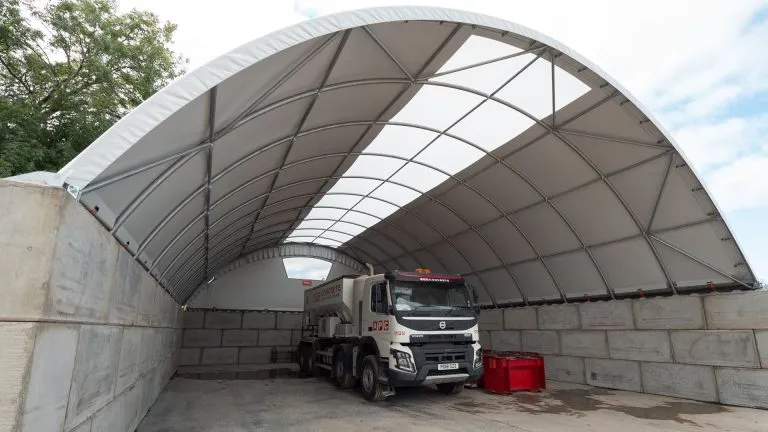
Recycling is more than a sustainability initiative, it’s a legal and operational necessity for many commercial properties across the UK. Whether you’re managing a large industrial estate or a logistics centre, the volume and variety of recyclable materials produced can quickly become unmanageable without the right infrastructure in place. That’s where recycling material storage units come into play.
Well-designed storage units ensure everything from paper and plastic to metal and aggregates is sorted, protected, and stored correctly. This not only helps businesses stay compliant with environmental regulations, but also improves on-site efficiency, reduces cross-contamination, and can even reduce waste collection costs.
McGregor Opus offers durable and re-deployable recycling and aggregate storage bays designed specifically to meet these needs, especially for businesses dealing with loose recyclables or requiring weather-protected bays. In this guide, we’ll explore practical strategies to organise recyclables more effectively using recycling storage units, and show how McGregor Opus supports long-term waste management success.
How does recycling material storage units keep recyclables organised?
Implementing a First-In, First-Out (FIFO) system By rotating your recycling inventory so that the oldest materials are processed or collected first, you prevent overflow and avoid degradation. FIFO systems are particularly useful for businesses with high recycling volumes. Recycling storage units should be laid out to facilitate easy access from both ends or have signage to guide employees. This reduces confusion and ensures a smoother recycling flow without blockages or piles of forgotten waste.
Incorporating easy access for collection vehicles No matter how well-organised your internal recycling system is, inefficiencies during collection can cause disruptions. Recycling material storage units should be located and spaced with vehicle access in mind. Aisles wide enough for forklifts or refuse trucks, combined with open-ended or roll-up bay access, save time and reduce the risk of delays. This leads to a more consistent recycling routine and helps meet pickup schedules without disruption.
Using modular layouts to scale with site demand Recycling demands can grow quickly, especially during peak production periods. Opting for modular storage layouts means you can add or rearrange units easily as your recycling needs change. Modular recycling storage solutions let you respond to operational shifts without large-scale redesigns or permanent construction. This adaptability is ideal for commercial properties where space and requirements evolve with contracts, tenants, or seasonal demand.
Maintaining clean, well-ventilated storage areas Ventilation is key when storing materials like food containers or organics, which can quickly develop odours or attract pests. Recycling storage units with natural airflow or integrated ventilation features help maintain a cleaner environment. Regular cleaning, pest-proofing, and clear visibility into each bay support a more sanitary site. Well-maintained areas are also easier to audit for compliance and give staff confidence in handling waste correctly.